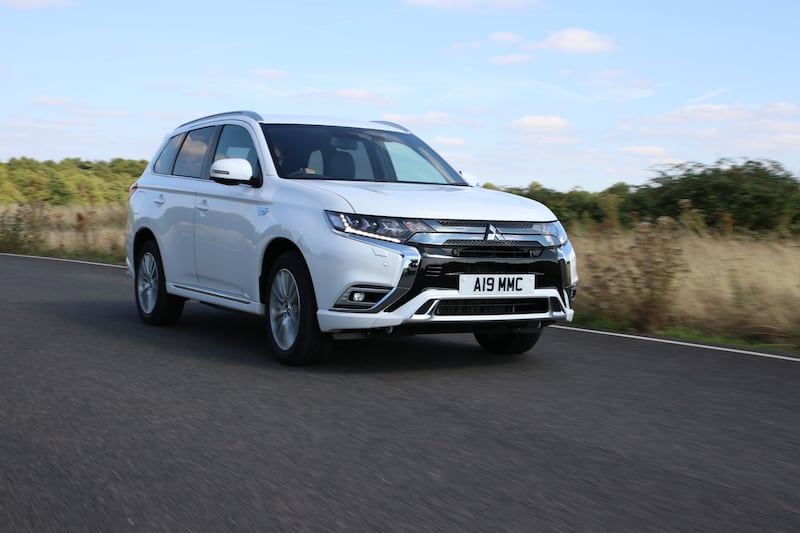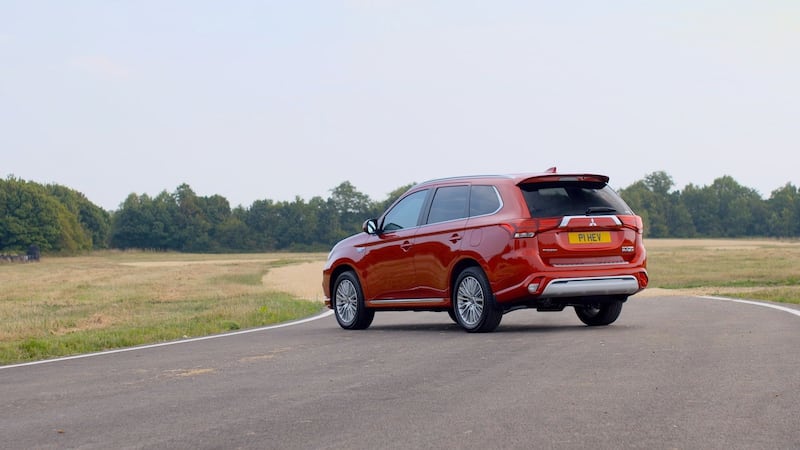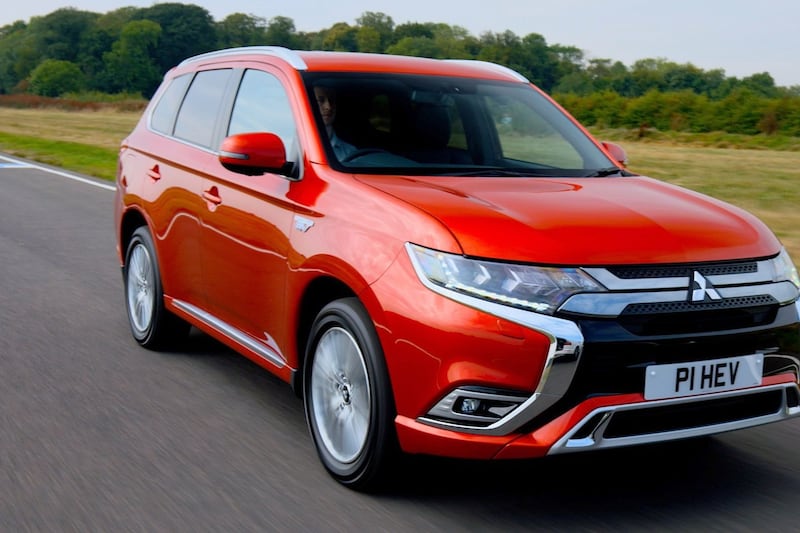ELECTRIC vehicles are undoubtedly the coming thing, writes William Scholes. But for all the rapid advances made in recent years, it’s clear that many drivers still consider EVs too compromised compared to the petrol and diesel cars they know and understand.
Those drawbacks are being quickly addressed, however.
Range is improving all the time, though charging infrastructure remains patchy. Compared to a visit to the petrol station, it takes too long to re-juice batteries.
EVs tend to be expensive, too. Manufacturers are focusing investment on the premium end of the market, where higher prices help off-set the development costs.
Even smaller electric cars pitched at the mainstream are pricey - a Nissan Leaf costs more than £31k, a Renault Zoe just shy of £22k - though the government’s £3,500 electric car grant eases things a little.
None of this has deterred early adopters. But before EVs can become more mainstream the current compromises will need to be comprehensively tackled; the industry is clearly bent on doing this, and as more and more new electric cars come to market and the technology continues to improve, the pace of change will only increase.
Plug-in hybrids sound like an ideal compromise - the opportunity to drive emissions-free for a decent distance, but with the reassuring back-up of an internal combustion engine
In the meantime, another form of compromise seems like a better bet for more motorists.
Hybrids, which pair a traditional petrol or diesel engine with an electric motor and a battery, offer EV benefits with none of the worry associated with range and charging.
There are essentially two types of hybrid.
First are the self-contained hybrids. Toyota, pre-eminent in this field, calls these ‘self-charging hybrids’; this greatly annoys pure EV enthusiasts…
These recharge their battery through harvesting energy when the car is, for example, braking or free-wheeling. These typically have very short electric-only ranges.

Second are the plug-in hybrids. These also harvest energy that would otherwise be lost during braking, but the key difference is that they have larger batteries, capable of holding enough energy to make electric-only journeys of between 20 and 30 miles a real possibility.
And, as the name suggests, those batteries can be replenished by plugging the car directly into a charging point or domestic electric supply.
If you can’t plug in before the battery is empty or your journey is longer than its EV-only range allows, then the car’s engine kicks in to extend range or recharge the battery.
It sounds like an ideal compromise - the opportunity to drive emissions-free for a decent distance, but with the reassuring back-up of an internal combustion engine.
However, it does mean that you are lugging around a heavy battery-and-motor combination when you are relying on the engine alone; conversely, when you’re travelling in electric mode, your car is having to haul around the weight of an engine.
Either way, ultimate efficiency is blunted; the trade-off is that you still have the reassurance and flexibility of a traditional engine and fuel tank arrangement, as well as a strong measure of EV ability.
Because a plug-in can make such good use of its battery power, it can also record very strong fuel consumption and CO2 figures.
This is why company car users - whose benefit in kind tax liability falls as their vehicle’s CO2 emissions also fall - prize plug-ins so highly.
The undisputed king of the plug-ins is Mitsubishi’s Outlander PHEV.

Wrapping its electrified drivetrain in the must-have body style of an SUV has made the Outlander PHEV an even more compelling proposition. And with an electric motor on each axle, it is also four-wheel-drive.
It went on sale in 2014 and has been Europe’s most popular plug-in hybrid every year since.
In May, for example, 3,257 Outlander PHEVs were registered in the EU, getting on for three times as many as the second favourite, the Mini Countryman with 1,120 registrations.
Hybrids, incidentally, still heavily out-sell pure-electric cars. Figures from industry analysts Jato Dynamics show that 73,000 hybrids were registered in Europe in May, compared to just under 23,000 EVs.
The Outlander PHEV has also been the best-selling plug-in - whether hybrid or pure-electric - in the UK.
The Mitsubishi, then, is something of a phenomenon, essentially creating its own market.
The Outlander PHEV offers an electric-only range of 28 miles, average fuel consumption of 139mpg and CO2 emissions of 46g/km
It is unsurprising, then, that other car-makers have added plug-ins to their fleets.
And with the likes of Volkswagen, Volvo and Mercedes (as with the E300 DE featured in Drive earlier this month) getting serious about plug-ins, Mitsubishi recently treated the Outlander PHEV to a comprehensive update.
Not much has changed on the outside - the Outlander remains a rather plain and prosaic SUV - but the real spark lies under the skin.
It gets a new petrol engine - a 133bhp, 156lb.ft 2.4-litre four-cylinder unit, which is clever enough to switch between two different combustion cycles - and a battery with its capacity increased by 15 per cent to 13.8kWh.
The battery and electric generator have each had their outputs increased by 10 per cent, while the rear electric motor has also been given a 10 per cent power boost to the equivalent of 94bhp.
These changes have also given the Outlander PHEV a higher top speed in EV mode, up from around 78mph to 84mph.
Put all of this together, and the Outlander offers an electric-only range of 28 miles, average fuel consumption of 139mpg and CO2 emissions of 46g/km using the new WLTP (Worldwide Harmonised Light-vehicles Test Procedures) assessment.

The CO2 figure - and remember, that’s the crucial one for business users - falls to just 40.3g/km when the WLTP figure is converted to an NEDC value. The discredited New European Driving Cycle assessment system is being phased out but is still, for now, relied upon for taxation purposes.
That means the Outlander PHEV’s benefit in kind liability is 16 per cent, which is the lowest bracket available in the current tax year.
No other SUV gets close. Nor do any of the more usual company car choices - a BMW 320d M Sport, for example, is rated at 118g/km, which puts its benefit in kind rate at 31 per cent.
The hardware that makes the Outlander PHEV’s drivetrain work is fiendishly complicated.
Left to its own devices, the Mitsubishi’s super-computer prioritises running on electric, drawing energy from its battery to run its front and rear motors.
But the Outlander can also operate as what is known as a ‘series hybrid’. In this mode, the engine doesn’t directly drive the wheels but operates as a generator to charge the battery and run the electric motors.
This mode kicks in when you need a burst of acceleration or when, for example, the car is climbing a long uphill stretch of road. It also activates when the battery charge is too low.


Another trick up the Outlander’s sleeve is its ability to work as a so-called parallel hybrid.
In this mode the engine powers the front wheels, the front electric motor assists the engine and the rear motor drives the rear wheels. This can be considered a sort of high speed mode.
That the Outlander can juggle its various operating modes and power sources seamlessly and, for the most part, without the driver being aware of what it is doing is a deeply impressive feat of engineering.
Because it always wants to use electric power, the Mitsubishi is a quiet and refined big car. Driven thus, the well contained wind and tyre noise are the most prominent sounds.
And when the engine does kick in, it’s generally quiet and subdued. Things only get noisy when sudden, heavy acceleration is demanded - but the same is true for any petrol or diesel car.

The driver can also manually control how the Outlander goes about its business.
For example, you can push a button to ‘hold’ the battery’s charge and force the car to run on petrol power until you reach somewhere that EV mode is more beneficial, such as city driving.
The intensity with which the Outlander recovers energy can also be altered by using paddles behind the steering wheel.
These look like they ought to be gearshift paddles - the Outlander has an automatic transmission - and are intuitive to operate.
The battery can also be charged by the engine while the car is parked, though this is probably a last resort.
Instead, you’ll want to plug it in. A full charge from a standard 13-amp household socket takes between five-and-a-half and seven hours, while a dedicated wall box reduces this to four hours.
Some public chargers can also do the job in around four hours. If you can find a rapid charger an 80 per cent charge will take 25 minutes.

To maximise the Outlander PHEV’s potential, you will want to plug it in as often as possible and keep journeys short, so that minimal - ideally, no - use is made of the petrol engine.
If your daily mileage is around 20 miles - a realistic EV range - then this could be you, and the car will be very cheap to run.
Unfortunately, my typical driving pattern is probably the least efficient way to use the Outlander - the distance from home to office is around twice as far as the batteries alone could get me, plus much of the journey is on motorway.
This gives the car very little chance to recuperate energy - in other words, once I’ve burned through the battery, the car has to use its petrol engine, which is hardly at its most frugal at motorway speeds.
The net effect during my stewardship of the Outlander PHEV was fuel consumption that emphasised the merits of a diesel SUV.
Mitsubishi has a handy calculator on its website intended to show how much money you can save by switching to an Outlander PHEV.
In many cases, saving of several thousand pounds are available during a three-year period; but in my own case, the savings are exactly… zero.
The lesson is that - as with pure EVs - it pays to carefully research how your mileage, use and lifestyle will fit in with the car’s running costs and the practicalities associated with charging it.
The Mitsubishi Outlander PHEV is a thoroughly rational proposition, not least because of its promise of super-low running costs, courtesy of a befuddlingly complex drivetrain. The fact it all works so smoothly is an amazing achievement
As mentioned, the fact that a plug-in hybrid may actually cost more to run than a diesel or petrol car can be offset by the tax savings available to company car users.
And, of course, they may be able to pocket those savings as well as greatly reduced running costs if their usage pattern can maximise the efficiencies of the car’s drivetrain.
Setting the drivetrain to the side, there is still much that recommends the Outlander. It’s a large, spacious SUV with lots of room for passengers and their luggage.
As part of the recent overhaul, Mitsubishi now welds the Outlander’s bodyshell differently, to make it stiffer and stronger.
It also gained new shock absorbers to improve the ride and the power steering was tweaked to offer more responsiveness. The brakes have been beefed up and ‘sport’ and ‘snow’ modes were added.

Truth be told, the Outlander PHEV is not the most engaging car to drive. It feels heavy and doesn’t enjoy being taken by the scruff of the neck and thrashed on a favourite back road.
Try to drive it with enthusiasm and you get the feeling that the technology - that otherwise works so seamlessly and impressively to shuffle between petrol and electric power - acts as a barrier between the driver and any sense of dynamic enjoyment.
The Outlander PHEV isn’t that sort of car though. It might not be a lot of fun, but its financial credentials are compelling.
It is a thoroughly rational proposition, not least because of its promise of super-low running costs - under certain circumstances, at least - courtesy of a befuddlingly complex drivetrain.
The fact it all works so smoothly is an amazing achievement.

AT A GLANCE
Mitsubishi Outlander PHEV 4h
Price: £39,500
Engine and transmission: Hybrid with 2.4-litre four-cylinder petrol with 133bhp and 156lb.ft, and 13.8kWh battery with front and rear electric motors, for total system outputs of 233bhp and 221lb.ft. Four-wheel-drive, automatic transmission.
Performance: Top speed: 84mph (EV mode), 106mph, 0-62mph in 10.5 seconds, 50-62mph in 3.7 seconds
Fuel consumption and CO2 emissions: 139mpg (WLTP), 35.4mpg (real world - see text); 46g/km (WLTP), 40.3g/km (NEDC)
EV range: 28 miles (WLTP), 16-20 miles (real world)
Car tax: Zero in first year, then £135 annually
Benefit in kind: 16 per cent
Euro Ncap safety rating: Five stars (88/84/64/81), 2013







